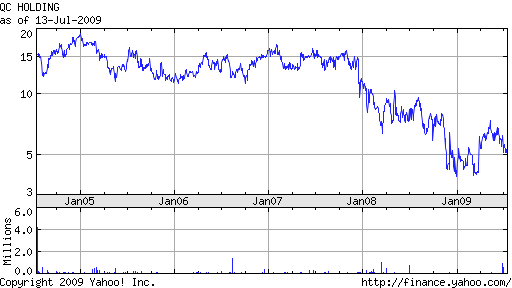Loan Sharks: The New Subprime Lenders With A Twist – They Expect To Get Repaid – And Why A Loan At 2,437% Interest Makes Sense
For every loser, there is a winner. Since the demise of the subprime lending industry, loan sharks have been reaping profits by lending to the same foolish crowd that used to be the target of subprime lenders.
In this country, the new subprime lenders are called payday lenders, who operate legally. In Britain, the new subprime lenders simply call themselves, well, loan sharks and operate without the courtesy of government sanction. The Wall Street Journal had an interesting article on loan sharking in the UK that should have been titled – “Why The Foolish Can’t Be Protected From Themselves”.
In a recent report, the U.K. think tank New Local Government Network said it expects the number of people with debts to loan sharks to jump to more than 200,000 in Britain this year, from an estimated 165,000 in 2006. A confluence of indebtedness, poverty and the diminished availability of regulated subprime credit are creating the conditions in which many are borrowing “from nefarious sources,” the report says.
But perhaps no country in the world was more addicted to debt than the U.K. By the end of 2008, the average British household had a debt-to-income ratio of 180% compared with 140% for the average U.S. family, according to the Organization for Economic Cooperation and Development.
That is coming back to haunt the U.K. The number of individual insolvencies rose by almost 30% year-to-year to 33,073 in England and Wales in the second quarter of 2009, the highest level since records began in 1960.
New Lending Lessons For British Borrowers
Apparently, over leveraged U.K. borrowers took every nickel they could from lenders foolish enough to lend to them, oblivious to rate or terms. The actions of these borrowers could almost be viewed as rational since the money they borrowed and spent that they couldn’t pay back is now being absolved in bankruptcy courts with little repercussions from now defunct lenders. U.K. borrowers who now have to deal with unlicensed loan sharks are shocked to learn that the loan sharks actually expect to be paid back – or else.
Some consumers are going to loan sharks to fund purchases for items including new televisions, overseas vacations or expensive clothing.
In mid-2007, Donna Ockerby, a 45-year-old auxiliary nurse in Manchester in northern England, turned to a local loan shark after her hours were cut at work. She borrowed £700 from Johnny “Boy” Kiely to help pay for a wedding dress.
Mr. Kiely, who charged interest rates of up to 2,437%, was jailed earlier this summer for five years for offenses including blackmail and illegal money lending. Ms. Ockerby now lives in a one-bedroom apartment on government benefits. She was moved out of her childhood home by police to protect her. Ms. Ockerby, who says she is on antidepressants, says the decisions to borrow from a loan shark ruined her life.
I’m sorry Ms. Ockerby but you are a financial idiot who deserved to pay the market rate of 2,437% interest. Did you ever hear of “if you can’t afford it don’t buy it”? What was the problem with buying or renting a used wedding dress for a fraction of the cost? Johnny “Boy” Kiely risked his capital, is now in jail and out his £700. Johnny “Boy” did not ruin your life – you did.

